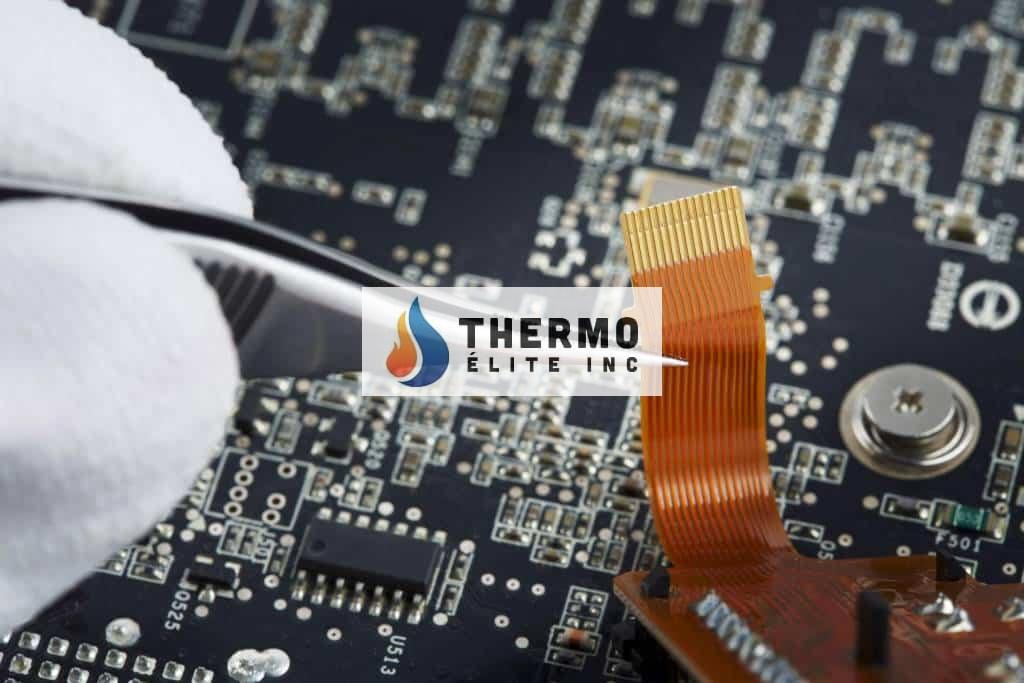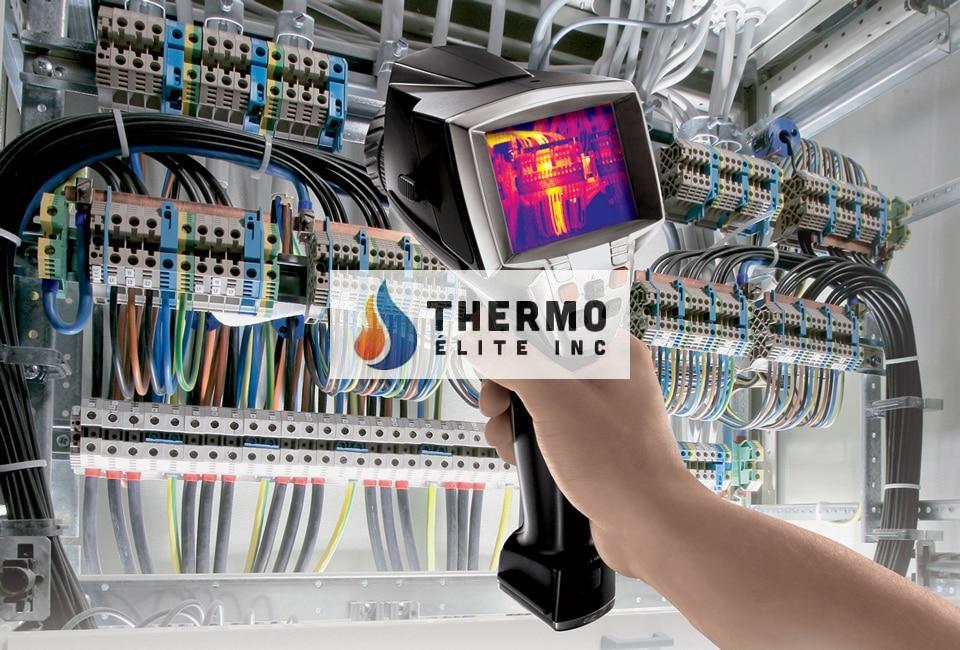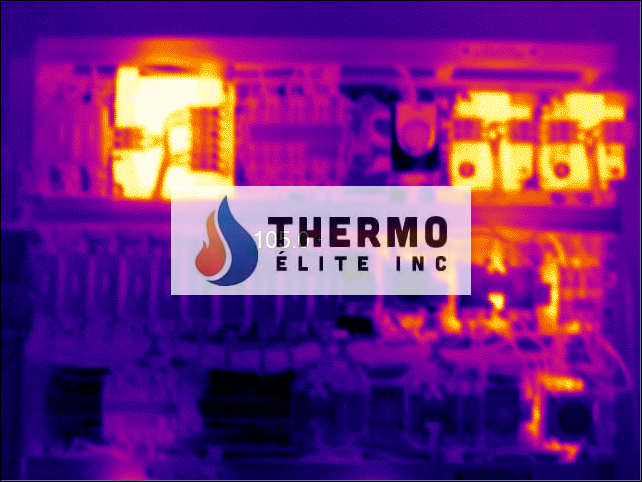Thermal Imaging is a technology that takes advantage of thermal differences in various objects and surfaces to check for faults and breakdowns in various systems. Thermal imaging has found a wide range of applications in electrical systems.
The use of thermal imaging on electrical systems falls under a category known as Predictive Maintenance Fault Finding. Predictive maintenance fault finding, as the term suggests, involves investigating electrical systems in order to predict where faults might occur, before they actually do. That’s where the real value of thermal imaging on electrical systems is. It c
How Does Thermal Imaging on Electrical Systems Work?
Let’s get into the nitty-gritty of thermal imaging on electrical systems. As mentioned earlier, thermal imaging is banked on the different values of thermal emissivity by different electrical components. Ordinarily, any electrical component that is under stress begins to build up heat and will have more thermal emissivity that is expected.
While such a component might keep working and appear normal to the naked eye, it is always bound to fail sooner or later. Thermal imaging can help avoid breakdowns. Inspectors are able to catch and recommend maintenance and repairs before interruptions occur.
Thermal imaging is conducted with the help of an infrared thermal imaging camera. An infrared thermal imaging camera has the capability to capture infrared red rays. All objects have the capacity to absorb or emit heat. Heat movement in the air is often in the form of infrared rays. Thermal emissivity is equivalent to infrared emission.
It is the emitted rays that the imaging camera captures and uses to gauge the temperature of a certain object. Basically, the inspection of electrical components using thermal imaging technology involves non-contact temperature measurements. The intensity of the infrared emission determines the temperature reading. High intensity depicts high temperatures.
In addition, the imaging cameras have a screen on which they display heat maps. The screen shows the shapes of the various objects being investigated with different colors based on their thermal emissivity. The colors range along the wavelength spectrum.
During thermal imaging inspection of electric systems, inspectors usually capture images and photos of various components in your home and take time to inspect them. They are normally looking for any abnormalities in temperature levels. As mentioned earlier, such abnormalities indicate that that particular component might be under stress, and is bound to fail.
The inspectors will then prepare a comprehensive report, and provide maintained and repair recommendations. This report serves as the guideline during the maintenance and repair procedures. Inspections are not a one-off task. They ought to be carried out periodically. All the components on an electrical system are prone to wear and tear. They have to be inspected regularly and maintained properly, to ensure you never experience any sort of breakdowns.
The benefits of carrying our thermal imaging inspection on electrical systems, be it at home or in a factory are many. Below we explore some of these benefits.
Benefits of Thermal Imaging Inspection of Electrical Systems
As we have mentioned above, electrical systems whether at home or in a factory need to be inspected regularly. One of the major insurance companies in the US estimate that up to 25% off electrical failures are caused by faulty connections or components. If these issues can be addressed early enough, a lot of losses could be avoided. Losses are avoided in the sense that thermal imaging inspections can help avoid breakdowns.
One of the most outstanding aspects of the use of infrared imaging cameras, it that it is a non-contact way of measuring temperature and doing inspections. Take for instance the case of factories. Electrical systems in a factory usually involve high voltage and are extremely hazardous. Getting close to live components in such a system is getting yourself into some serious risk. Any other kind of inspection in such a setting would involve shutting down the systems, which translates into downtime and possibly loses.
Also, since thermal imaging is a non-contact method, none of the systems needs to be shut down during the inspection. In fact, the inspection must be carried out while the systems are still running, in order to identify any faults that might be there. Last but not least, thermal imaging does not require you to demolish or remove any sections of a building in order to access the electrical components. The imaging cameras are able to image the components while they are behind walls or above ceilings, so long as the surrounding surfaces have uniform temperatures.
Below is a list of some of the problems that thermal imaging can detect.
- Load imbalances
- Overheating cables
- Stressed electrical components.
- Loose connections
Being able to detect impending electrical faults through thermal imagining can save money for the establishment in many ways. Some of them are listed below.
- It reduces the risk of an electrical fire.
- It helps to plan for maintenance. You are able to identify the sections that need priority.
- It helps to investigate whether everything has been installed properly
- It helps to enhance safety
- An establishment is a good thermal imaging report is likely to attract low insurance premiums
Clearly, thermal imaging inspection of electrical systems it quite essential. In some jurisdictions, it is mandatory to conduct such inspections on commercial or residential buildings periodically. In the past, thermal imaging inspections had only been affordable to large companies. In recent years, technology has tremendously improved. Thermal imaging cameras are affordable to individuals. You can purchase an infrared imaging camera and inspect your home yourself.
As mentioned earlier, thermal imaging is used to inspect many different components and aspects of an electrical system. Below, we delve deeper into how the technology is applied while inspecting different components and sections of an electrical system.
Commonly Inspected Electrical Components
Almost all electric faults have something to do with abnormal heating. This might be caused by different factors such as high resistance, excessive current flow, and many others. That is why thermal imaging is very effective in inspecting electrical systems. Before we get to the actual electrical components, here are a few important things to note.
Thermal imaging inspections are only carried out when the system is on load. If possible, you need to have the system at its peak load, so that you can clearly see the performance of various components in the worst-case scenarios. Basically, the more the load of you on the system, the easy it will be to detect the problems. You should factor in the effect of the wind and air movement as well.

Thermal imaging inspections are not about surface temperatures. While the imaging cameras can show images of electrical components while they are behind other surfaces such as walls, it is important that you image them directly. Take, for instance, solid metal bus trays and electrical cabinets. These enclosures can significantly interfere with the performance of the electrical components inside them, especially if they are in contact with them.
If possible, the enclosures should be removed before you start imaging. You can choose to image them first before you go inside as well. They might give you an impression of what to expect. For instance, if you find the surface of an electrical cabinet to be extremely hot, you have to know the components inside can only be hotter, and there is a serious problem.
In cases where the electrical components being imaged are behind walls, you may not be able to image them directly. You should try to image the components when the surface temperature of the walls is quite uniform.
Below are the commonly inspected electrical components or issues.
Conductors
Conductors form the largest part of an electrical network. Conductors are also prone to wrong or loose connections or undesired contact. They are also prone to wear and tear. Conductor issues are always there in an electrical network, even though they are not causing a breakdown. It is important that they are caught and rectified in time.
Loose connections cause the conductor to start heating up at that point. When a connection is loose, it allows air and other compounds in the spaces present. This causes high resistance to current flow. While current might continue to flow, such connection often causes loss of energy and sparks which might cause a fire.
We had already mentioned that thermal imaging takes advantage of heat different. When the area around a loose connection gets hotter than the surrounding areas, the imaging camera can quite easily pick it up. The actual point of heating is always small and therefore very distinctive. Modern thermal imaging cameras are very powerful and will pick up very subtle heat differences. These differences are often an indication that immediate attention is required.
Overloaded Circuits
Thermal imaging is also quite effective in identifying overloaded circuits. Circuit overloads cannot be identified by a single overheating instance like loose connections. Most circuits will be made of various electrical components and conductors. An overloaded circuit is determined by a series of possible faults throughout the circuit.
One very common indication of an overloaded circuit is a stressed circuit breaker. Circuit breakers are supposed to control the flow of electric current. If the circuit is overloaded, it means it is carrying more current than it is supposed to. In as much as the circuit breakers might not cut off, they will be operating on the extreme edge. As mentioned earlier, excess current causes electrical components to overheat. Stressed circuit breakers often appear hot on both ends.
Overloaded circuits also tend to have overheating conductors. Experienced electrical technicians and inspectors know that certain electrical conductors ought to be operating at certain temperatures. If the temperatures on the conductor are higher than normal, the circuit might be overloaded. Note that the conductor might have uniform temperature in this case.
Circuit overload might have a significant impact on your energy bills. Most of the excess current is lost as heat. A significant rise in your normal electricity bills should prompt you to get a thermal imaging inspection conducted on your electrical systems.
Transformers
Transformers are used to step-down electric current for easy distribution. A large factory will certainly have a transformer or two, and they will need to be inspected regularly. Large residential buildings have dedicated transformers as well.
A transformer is normally a large electrical component and has various parts. It might develop a problem in one section, but still, continue functioning. Inspecting a transformer involves imaging both the exterior and interior parts. Inspecting transformers might require more than one type of infrared imaging camera.
Inside the transformer are coils that and oil. The exterior of the transformer mainly consists of if the enclosure and bushings for input and output. The imaging cameras have to check the temperature of the coils inside and determine whether they are working optimally. Overheating coils might indicate that the transformer is overloaded, or there is an oil spillage. Oil is responsible for cooling the coils. If it spills, the coils will overheat.
Imaging the exterior of the transformer is quite easy. The exterior only features the bushings, where overheating might indicate either too much load or loose connections. Transformer inspections can help determine whether a faulty transformer should be repaired or replaced. They also help in establishing the urgency of the issue at hand. Repairing or replacing a transformer, especially when it has interior issues is often a complicated process.
At this juncture, it is quite easy to understand why the thermal imaging of electrical systems is essential. A complete and thorough inspection will give you a clear indication of the state of your electrical system. Also, it is quite easy to carry out or supervise repairs, when you know what sections or components have issues. The most significant benefit is being able to constantly monitor the performance of your electrical system, especially if it is in a commercial property.
Get in touch with a reputable thermal imaging inspection company today, and get your electrical systems checked. It will certainly save you a significant amount of money if you can avoid impending breakdowns.




